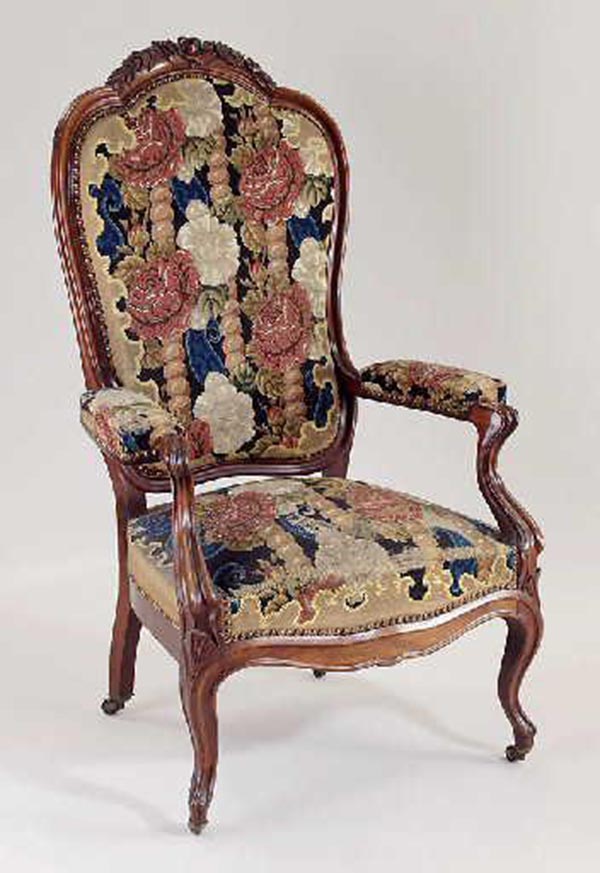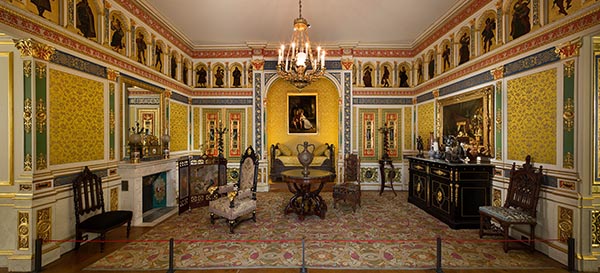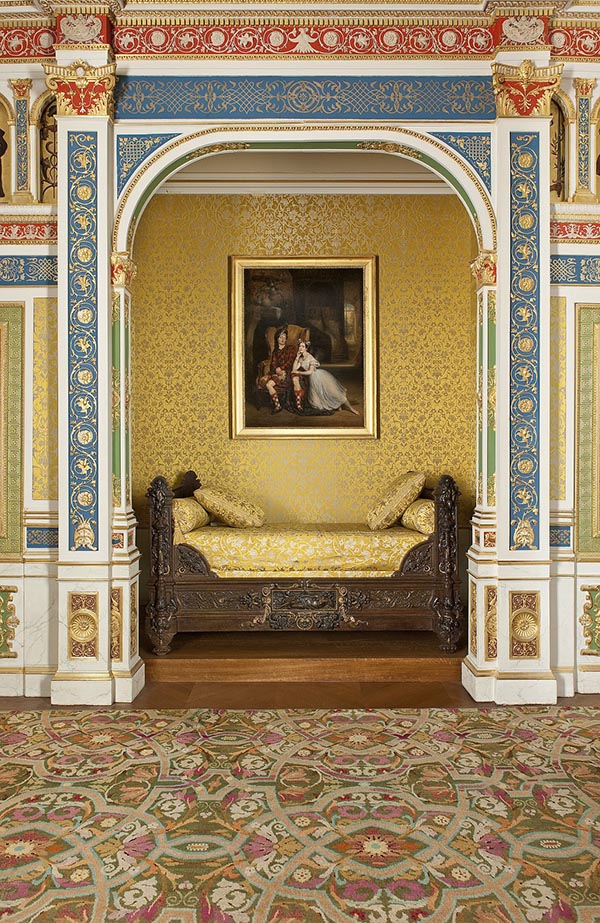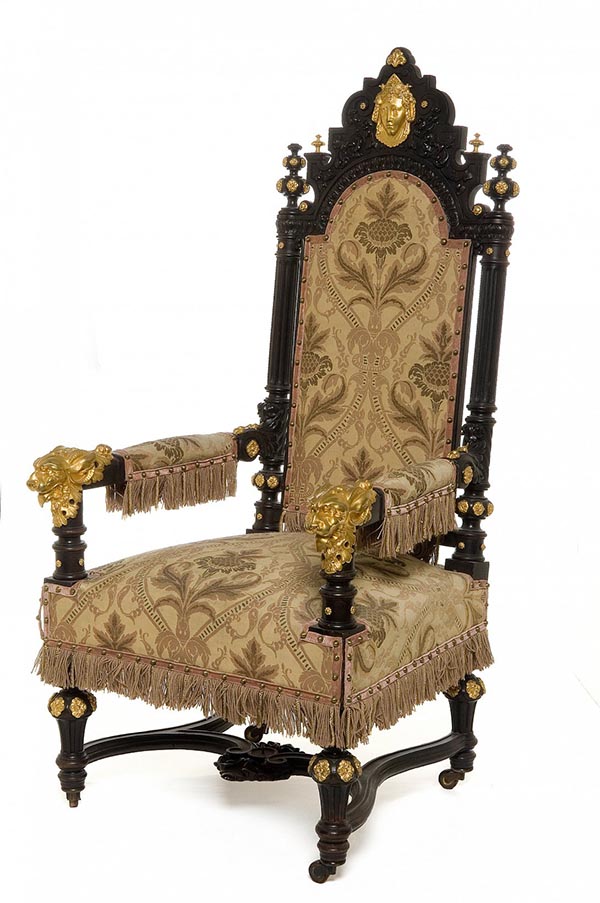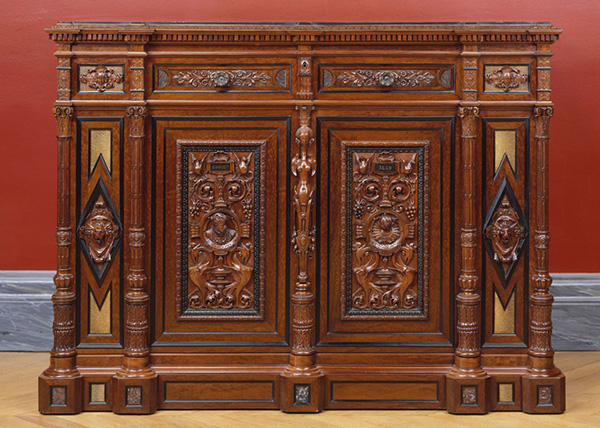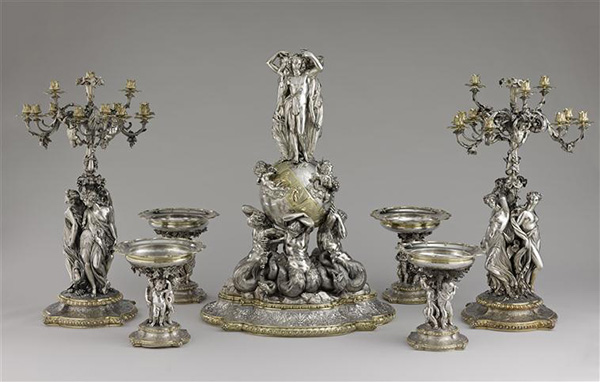Louis-Philippe style
Download PDFThe Louis Philippe style, name of the French king who takes the power after the Revolution of 1830, follows the Restoration style and precedes the Second Empire or Napoleon III style. Architecture and decorative arts, goldsmith and furniture in particular, have extraordinary circumstances during the July Monarchy. Jacob-Desmalter and Bellanger, very appreciated by Louis-Philippe, are among the artistes who contribute to spread the new style thanks notably the World expositions.
If the Louis Philippe style extends a certain classicism inherited from the Restoration style concerning its sober lines, the furniture becomes however more imposing. The chest of drawers with straight lines and with curved molding on the upper drawer is the main piece of furniture of the period. The ornamental inventory is more minimalist and the use of bronze more discreet.
With the French Revolution, the bourgeois and capitalist society is born and, under the reign of Louis-Philippe, this class have a lightning ascent. The Louis-Philippe style is aimed among other things at this buyer class which tries to fill its legitimacy with plush, massive and comfortable decor.
For example the tub chairs, completely padded with horsehair or springs, appears, as practical furnitures, such as chest of drawers for toilette and wardrobes with mirror. The presence of wheels on the tables and on the seats becomes common, as we can see on this pair of chairs by Claude-Aimé Chenavard, renowned decorator, or on this Voltaire armchair, another essential model.
The "bourgeois room", reconstituted at the Musée des Arts Décoratifs in Paris, perfectly reflects the issues of the time: the new search for hygiene, which brings for example the simplification of draperies surrounding the "lit bateau", typical model of the time, combines with the new search of comfort, which brings the widespread presence of stuffed seats. We also note the presence of chairs with perforated decoration, characteristic of the period, inspired by the very popular at the time medieval art.
Since the beginning of the 19th century, a vast rediscovery movement of the national past bring up to date the Middle Ages and the Renaissance. The Neo-Gothic style appears around 1815 and will go on during the 19th century in literature, painting, architecture but also decorative arts with for example the "cathedral-style" chairs. The Neo-Renaissance style developed in the 1830s and will be known his success under Napoleon III. Warm and dark woods like mahogany, rosewood, ebony, as well as blackened beech and pear will be privileged, unlike those used under Charles X,
The Grohé brothers, who founded their cabinet-making in 1847, became the official suppliers of Louis-Philippe and Napoleon III and specialized in historical styles. This writing desk commode they present in 1839 at the Exhibition of Products of French Industry, is characteristic of their production and that of the period with the search for functionality, the Renaissance-inspired iconography and the use of dark woods (ebony and rosewood).
The Grohé brothers are part of the great workshops born at this time and will know their hour of glory under the Second Empire, as well as the cabinetries Fourdinois and Froment-Meurice, dynasty of goldsmiths whose François-Désiré worked under Louis-Philippe. François-Désiré Froment-Meurice is the creator of the Centrepiece made from 1846 for the Duc de Luynes, after a drawing by Jean-Jacques Feuchère. This Centrepiece is well known for his revolutionary technique of repoussé. Inspired by the iconography and the compositions of the Renaissance sculptures, it represents the gods and goddesses Bacchus, Ceres and Venus on a globe and whose pose evokes the Three Graces.




